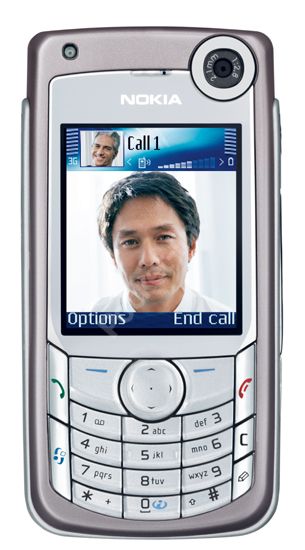The much awaited 6680 promises to bring 3G well and truly into the mainstream for Nokia, but can the new multitasking phone offer you multitasking options. We look and find out.
Our quick take
In our tests, call quality was excellent and I certainly seemed to have a much stronger signal in most areas than with the 6630 - perhaps the reception has been beefed up to help with the notoriously patchy quality of 3G in certain areas.
Grumbles? Not too many to be honest. The main problems I had with the phone were similar to my 6630s (all of them…). These include loss of packet data connections and the subsequent disabling of automatic email retrieval - but these are more to do with network integrity. Neither did I have any spontaneous reboots, which seemed to be such a common feature of the earlier model.
It seems Nokia has listened to its customers and put right many of the little niggles that were evident in the 6630. In the process, they’ve also squeezed in some nice new toys to play with. I for one think it’s done a pretty good job, so here’s hoping it stays on the market for a decent length of time to repair some of the damage done by the earlier model’s shortcomings.

Nokia 6680 mobile phone - 4.5 / 5
| FOR | AGAINST |
|---|---|
|
|
I’ve been anxiously awaiting the arrival of the Nokia 6680 for quite some time. You see, I’m one of the many people to be more than a little disappointed with the 6630 - Nokia’s first UK 3G offering. It was riddled with bugs from the outset and even after many software updates, failed to live up to most expectations. Enter the 6680, a sleeker, more business-like descendant, running on basically the same principles but with a few nifty improvements.
It looks so much better than the 6630. A more square shape to the design instantly makes it look like a professional’s tool, rather than the slightly gimmicky pear-shape of its predecessor. The keypad, despite still being a little small, doesn’t have that slightly odd upwards curve to it. So it’s easier to use and just feels better in your hand.
The first major and noticeable improvement is a forward facing camera in addition to the 1.3 megapixel main imaging unit at the rear. So now, you can video call without having to buy an additional cradle (or developing a nasty RSI in the wrist from trying to flip the 6630 round to see and be seen!). The rear camera is also protected by an active slide, which, I discovered after taking numerous candid images of the inside of my jacket pocket, remains active even when the keypad is locked. It may be useful for getting to the camera function quickly, but the option to turn it off would be helpful. There’s the addition of a flash and at short range, it’s actually quite effective. Another nice enhancement to the camera is the ability to change the white balance - surely one of the best things about digital photography and a rare feature on a camera phone up to now.
The video calling function also has a new element - the ability to share video clips during a call, so all those embarrassing “fall over in pub” moments can be shared immediately with your mates. Or is that just me…?
Nokia are most proud of the XpressPrint feature which lets you print your images directly on any PictBridge-enabled printer (Bluetooth even means you can do this wirelessly!) and as long as you’re not expecting to put your photos on a billboard, the quality is actually pretty good.
Get past the printing aspects and another new element that is likely to appeal to the office boys is the active standby screen. This resembles a miniature PC desktop, with shortcuts to your favourite applications in addition to the customisable soft keys.
There are also some neat little applications bundled with the phone (although this may depend on your network). There’s QuickOffice to view Word, Excel and PowerPoint files and a comprehensive suite of imaging and video editing applications.
The requisite messaging and multimedia functions are here too and, as always, are straightforward to set up and operate.
To recap
It seems Nokia has listened to its customers and put right many of the little niggles that were evident in the 6630
